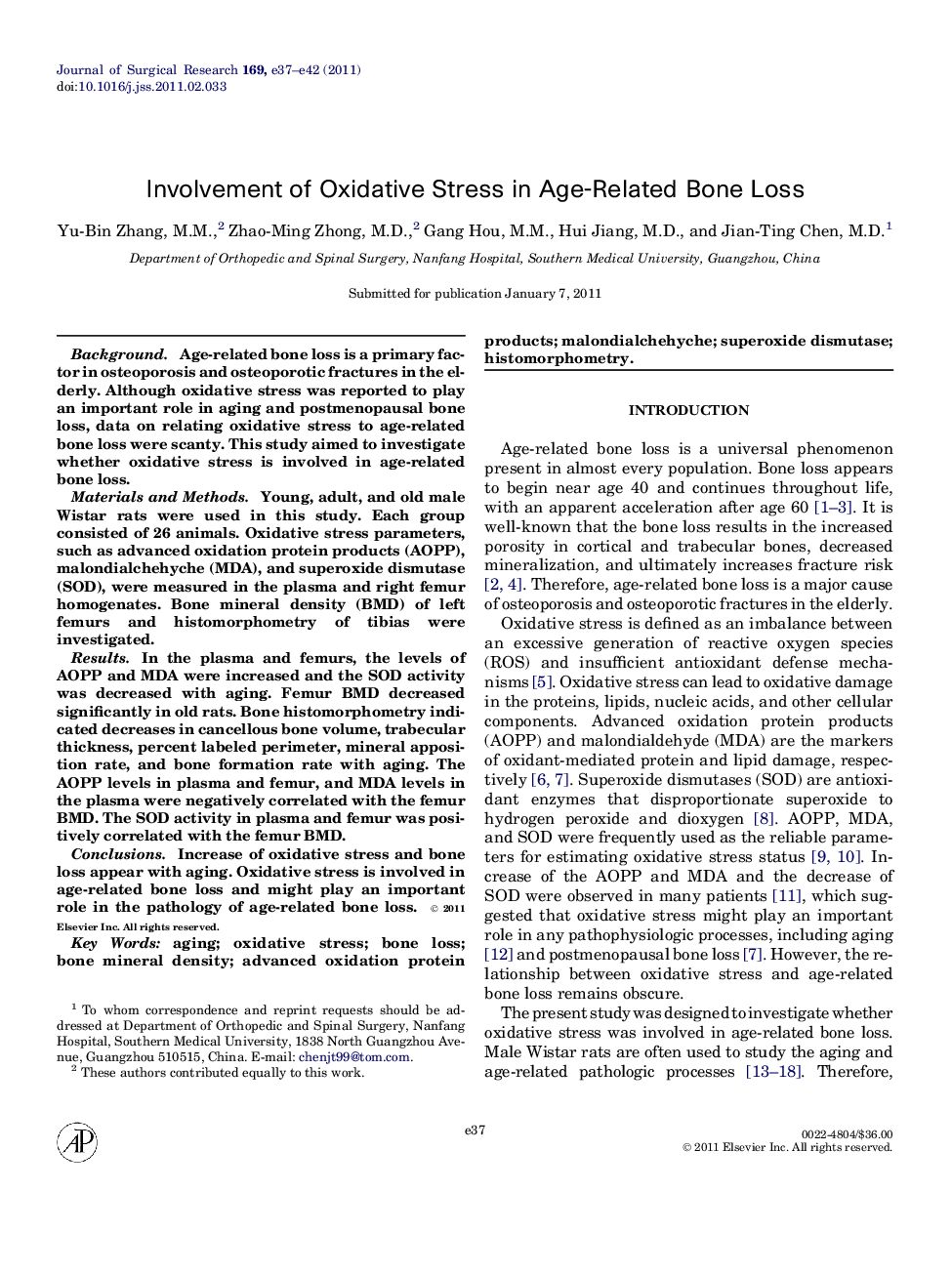| Article ID | Journal | Published Year | Pages | File Type |
|---|---|---|---|---|
| 4302237 | Journal of Surgical Research | 2011 | 6 Pages |
BackgroundAge-related bone loss is a primary factor in osteoporosis and osteoporotic fractures in the elderly. Although oxidative stress was reported to play an important role in aging and postmenopausal bone loss, data on relating oxidative stress to age-related bone loss were scanty. This study aimed to investigate whether oxidative stress is involved in age-related bone loss.Materials and MethodsYoung, adult, and old male Wistar rats were used in this study. Each group consisted of 26 animals. Oxidative stress parameters, such as advanced oxidation protein products (AOPP), malondialchehyche (MDA), and superoxide dismutase (SOD), were measured in the plasma and right femur homogenates. Bone mineral density (BMD) of left femurs and histomorphometry of tibias were investigated.ResultsIn the plasma and femurs, the levels of AOPP and MDA were increased and the SOD activity was decreased with aging. Femur BMD decreased significantly in old rats. Bone histomorphometry indicated decreases in cancellous bone volume, trabecular thickness, percent labeled perimeter, mineral apposition rate, and bone formation rate with aging. The AOPP levels in plasma and femur, and MDA levels in the plasma were negatively correlated with the femur BMD. The SOD activity in plasma and femur was positively correlated with the femur BMD.ConclusionsIncrease of oxidative stress and bone loss appear with aging. Oxidative stress is involved in age-related bone loss and might play an important role in the pathology of age-related bone loss.
